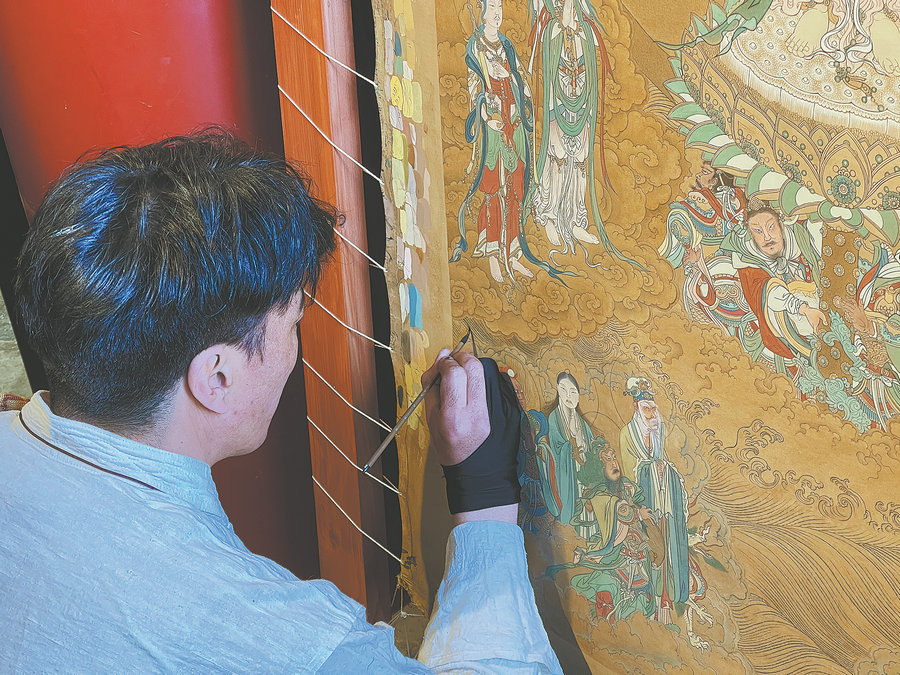

Life-changing chance
For Samdrub Kyab, the Beijing exhibition is one of many similar events, such as those in Shanghai, he has joined to promote his thangka works over the years.
"We've sold more than a dozen of pieces over the past three years," he says, each bringing in more than 100,000 yuan ($13,800).
The delicate artworks and propitious Buddhism meaning have made his works hotly pursued by collectors or religious sites.
"The most popular patterns have been 'Eight Auspicious Symbols' in Tibetan Buddhism, such as conch shell, treasure vase and gold fish," he says.
In February, he and four of his teammates delivered a piece that is 9 meters long for a local temple after four months of work.
"The thangka art has completely changed my life," he says.
Originally from Ruo'ergai county in the north of Aba, he came to Rangtang about a decade ago to learn the art. After graduating from junior middle school, he worked at a factory in Shenzhen, Guangdong province for eight months.
Then, he got to know that the Rangtang intangible cultural heritage center was offering free training of local arts, including thangka that has caught his fancy since childhood. There was also boarding and accommodation for free, which made it more tempting for the young man.
Upon arrival, Samdrub Kyab received professional guidance from local retired artisans and got the whole craft down to a fine art after five years of learning.
"I fixed my naughty and restless nature and got to concentrate my mind for a long period of time," Samdrub Kyab says.
Additionally, he got to visit various cities through the center's arrangement, including Shanghai and Beijing, to learn and immerse himself in more traditional art forms that can be integrated with intangible cultural heritage from Rangtang.
After graduation six years ago, Samdrub Kyab chose to stay at the center and became a tutor himself to hold the hands of newcomers.
At the same time, he got to earn commissions for outside orders from the training center.
Creators can keep 70 percent of the money, and 20 percent will go to the class management that uses it to purchase daily materials, which are quite expensive, he explains.
The remaining 10 percent will be given to the center for its routine upkeep. On average, he can bring in more than 200,000 yuan for himself a year.